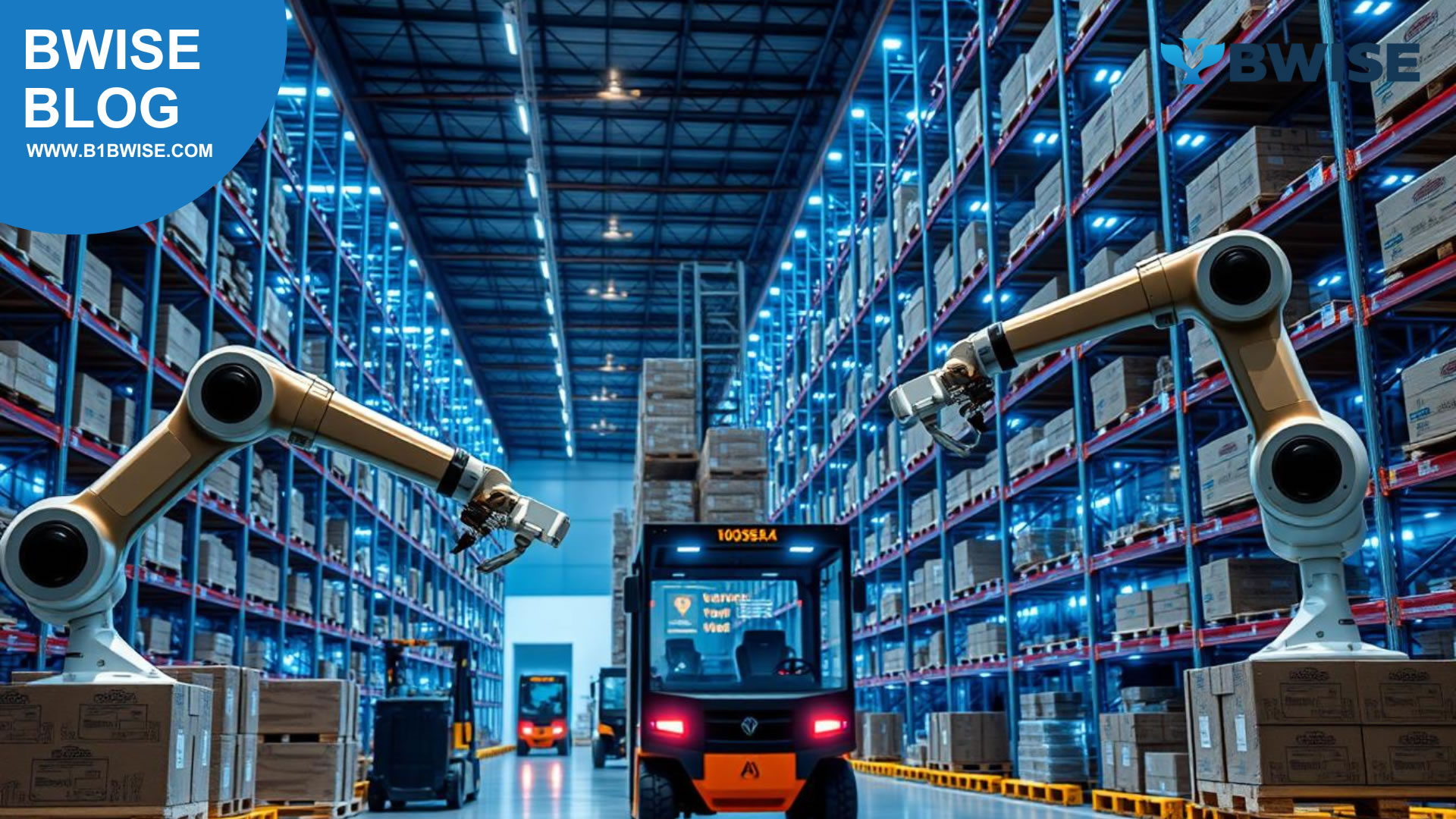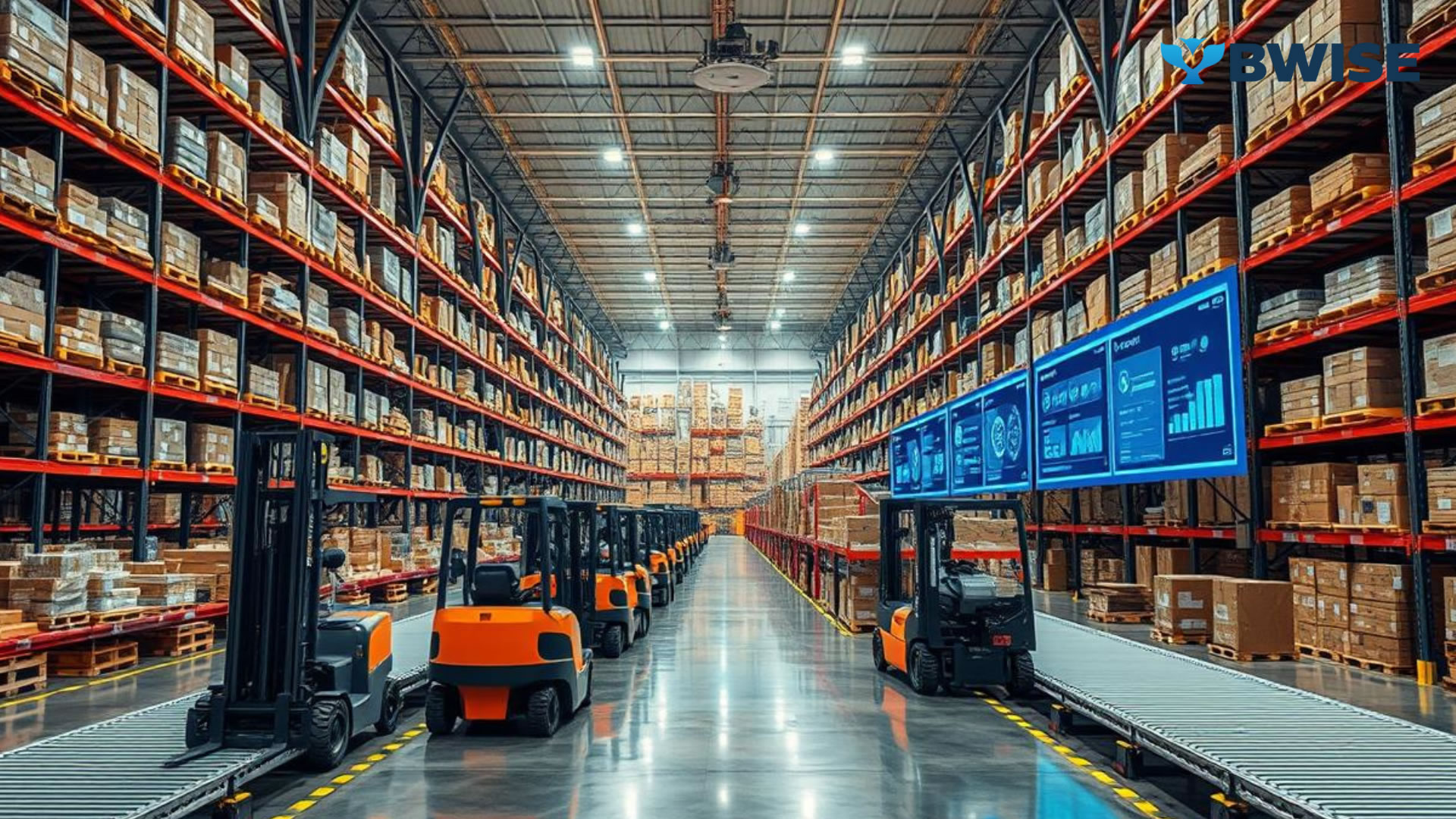Modern supply chains need more than old warehouse systems. Smart warehouses, powered by Industry 4.0, have changed how we manage inventory and track shipments. They make our operations more efficient. Companies must update their Warehouse Management Systems (WMS) to keep up with these new technologies.

Industry 4.0 is more than just new tools. It’s about making everything connected and data-driven. A WMS that uses AI, robotics, and cloud solutions can cut down on delays and costs. It also improves customer service. If businesses don’t adapt, they’ll fall behind those who do.
Key Takeaways
- Smart warehouses rely on Industry 4.0 to improve speed and accuracy in logistics.
- Outdated WMS systems struggle to handle the data demands of modern supply chains.
- Industry 4.0 technologies like IoT sensors and AI analytics drive real-time decision-making.
- Adopting these systems ensures compliance with evolving customer expectations.
- Failure to update WMS risks operational gaps in a tech-driven marketplace.
Revolutionizing Logistics with Industry 4.0
Industry 4.0 is more than just a trend—it’s a digital transformation changing logistics. Today, systems use automation and real-time data to track shipments. They predict delays and optimize routes.
Warehouses are now smart hubs. Every step, from inventory management to delivery, is faster and more precise.
Industry 4.0 digital transformation logistics
Companies adopting this change see fewer mistakes and lower costs. Real-time data lets teams act fast when problems arise. This means goods get to customers quicker.
Sensors and AI analytics cut down on manual checks. This reduces downtime and errors. This digital transformation also links suppliers, carriers, and retailers into one network. It boosts transparency in global supply chains.
Businesses that jump on this trend get ahead. Customers want fast and reliable service, and Industry 4.0 delivers. By using these technologies now, companies can lead in a world where being agile and innovative is key.
Emerging Technologies in Smart Warehouses
Smart manufacturing is changing warehouse work with new tech. IoT sensors and AI systems watch inventory in real time. This cuts down on mistakes and delays.
Big names like Amazon and Siemens use these tools. They make sure goods move smoothly from storage to delivery.
Smart manufacturing technologies enhancing warehouse efficiency
Routine tasks are performed by robotic arms and automated cars. Teams are able to concentrate on crucial activities as a result. Cloud solutions enable administrators to quickly make adjustments and monitor the situation from any location.
Advanced systems forecast changes in demand. They make necessary adjustments to stock levels beforehand.
5G networks and edge computing speed up data processing. As a result, warehouses are more economical and efficient. These technologies will be essential to keeping ahead as smart manufacturing expands.
Digital Transformation and Connected Systems
The internet of things (IoT) is changing how warehouses work. It connects devices and processes into one network. Smart sensors and RFID tags gather data on inventory, machines, and the environment.
This data turns into useful insights. Every asset, from forklifts to storage racks, talks to each other in real time. This cuts down on delays and mistakes.
IoT brings old equipment and new tech together for smooth workflows. Temperature sensors in cold storage adjust settings automatically. RFID readers track items through the supply chain.
These tools get rid of data silos, giving managers a full view of operations. Real-time dashboards show where things are slow, helping make quick changes.
IoT is used by warehouse workers to better use space or anticipate when repairs are necessary. Operations become more efficient as a result. Moving to completely digital, adaptable systems is becoming the standard for staying ahead as more locations adopt IoT.
Leveraging Data Analytics for Operational Efficiency
Data analytics turns raw warehouse data into useful insights. Artificial intelligence is key to this transformation. It analyzes real-time data to spot issues in inventory or staffing, making things clearer.
Imagine a system that predicts when equipment might fail. This is artificial intelligence at work, saving time and money. It’s all about being proactive with maintenance.
AI is being used by companies such as Amazon to improve order fulfilment. They automatically modify staffing levels based on demand forecasting. Delays are reduced and activities run more smoothly as a result.
AI also helps track how products move, leading to better storage layouts. This means faster pick times and fewer mistakes.
Data analytics helps make smarter decisions. AI looks at past sales to adjust inventory levels. For example, Walmart uses AI to match supply with demand, improving stock accuracy by 40%.
AI in analytics is not only a fad; it is a need. These technologies provide warehouses insight into every process. They transform data into a significant benefit. The future belongs to those who allow artificial intelligence and data to inform their choices now.

The Role of Advanced Robotics and Automation
Advanced robotics are changing warehouse work, making it faster and more precise. Tools like autonomous mobile robots (AMRs) and collaborative robots (cobots) work with people. They help with tasks like scanning items and filling orders.
Companies like Amazon use these tools to cut down on mistakes and increase work speed. Fetch Robotics helps make warehouse layouts better in real time.
These devices can move about and adapt to changing demands thanks to sensors and artificial intelligence. For instance, by concentrating on urgent orders, AMRs may reduce delivery times by up to 30%. By managing hefty duties, they also lessen accidents at work.
They work with IoT devices to share data in real time. This keeps inventory databases up to date, making the whole process smoother.
Advanced robotics also means warehouses can work around the clock without getting tired. Startups like Locus Robotics team up with stores to use robots. These robots help workers find what they need, making tasks 200% faster in some cases.
This automation doesn’t replace jobs but changes them. It moves roles to supervising and solving problems, creating a team effort between humans and robots.
Warehouses concentrate on expanding and evolving as they acquire these technology. Modern robotics prepares for the future while simultaneously saving money. It aligns with the concept of intelligent, networked systems found in Industry 4.0.
The outcome is quicker orders, accurate stock tracking, and safer places to work. All thanks to the quiet power of next-generation automation.
Integrating IoT and Artificial Intelligence
AI and IoT sensors are transforming warehouse operations. Every pallet’s position, temperature, and movement are continuously monitored via sensors. AI systems utilise this data to identify trends that humans would overlook via data analytics.
For example, AI can predict when equipment will fail, reducing downtime by 30% or more.
Warehouse managers get useful insights from data analytics dashboards. AI looks at trends in shipping delays or stock imbalances. It suggests changes to storage layouts or staffing.
This technology is used by businesses such as Amazon to automate refilling. This guarantees that products in great demand are always accessible. These instruments may increase speed and accuracy even in tiny warehouses.
AI and IoT combine to produce self-optimizing systems. Based on real-time data, such as supplier changes or weather delays, intelligent algorithms modify procedures. This isn’t only for the future; companies are currently using it to increase productivity and cut costs.
The future warehouse isn’t just automated; it learns, adapts, and scales. It uses the power of connected intelligence.
Best Practices for a Future-Ready WMS
Your warehouse management system (WMS) stays ahead of the curve in the connected industry by implementing best practices. Choose a WMS that integrates cloud platforms, AI, and IoT sensors first. This creates a network in which information flows easily across supply chain, logistics, and inventory systems.
Keep your system updated with the latest tech like 5G and edge computing. This ensures your WMS stays current and effective.
Scalability is crucial. Go for modular solutions that grow with your business. Real-time data lets teams act fast to changes in demand or issues.
Work with tech experts in connected industry tools to link old systems with new ones. Training staff on new tools helps them use automation and predictive analytics well.
Make sure your WMS talks to ERP, CRM, and supplier systems. This cuts down on mistakes and makes workflows smoother. Don’t forget about cybersecurity to keep systems safe from threats.
By monitoring performance and implementing new, related industry standards, you can always find methods to do better. Warehouses may thrive in a world where smooth connections promote increased productivity and creativity by doing this.
Conclusion
Smart warehouses are changing how we manage logistics and inventory. Technologies like AI, IoT, and robotics help save money and improve accuracy and speed. Modern warehouse management systems (WMS) need to use these tools to succeed in today’s fast world.
From autonomously operating robots to real-time data updates, automation increases efficiency. Businesses who modernise their WMS are now at a competitive advantage. You risk falling behind as others adopt more intelligent systems if you put off updating for too long.
Investing in sophisticated WMS is not only a smart decision, but also essential. Seek for solutions that integrate predictive analytics and automation. With new technology, this approach helps firms remain ahead of the curve rather than merely keep up. Adopting innovative concepts today is essential to the future of logistics.
